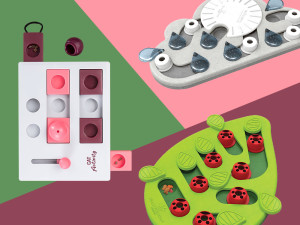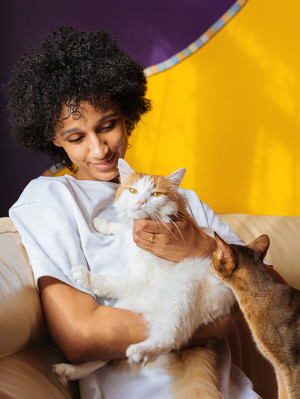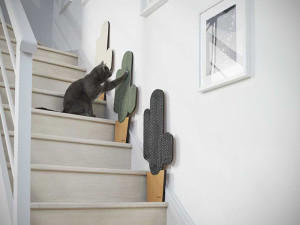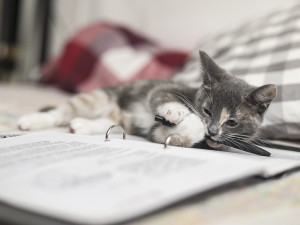How to Keep Your Kitten From Making You the Toy at Playtime
Your cat deserves to play, but you deserve to walk away unscathed
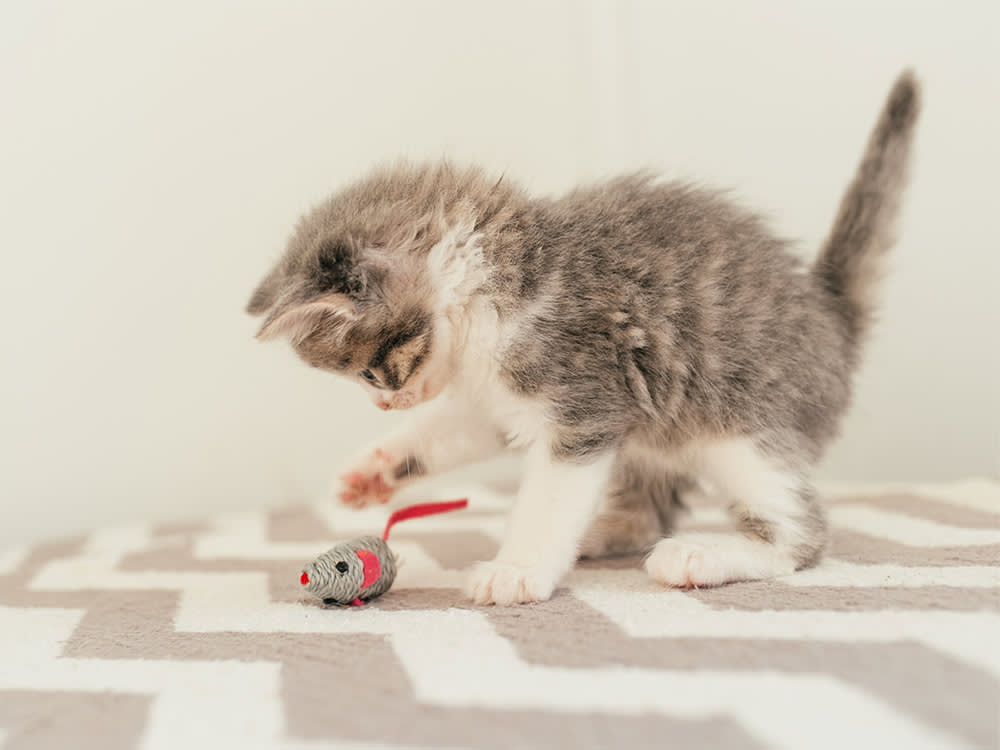
Share Article
It’s so fun to play with our cats – unless we become the toys they stalk, pounce on, scratch and bite. Then it’s not so fun. It hurts, and it teaches our cats a bad habit they might carry over into their interactions with others.
So, how do we teach them to play nice? It’s a tale of the toys. The fundamental lesson cats need to learn in order to play nice is which objects are toys and which are most definitely not. They need to be taught from the very start that it’s OK to play rough with toys, but when it comes to people, they need to be gentle.
To turn your fierce feline into a gentle kitty, you will almost certainly need to take some action. Those rough behaviours are your cat’s natural instincts, and they still crave activities that let them be, well, cats. Here are some things you can do to help them get out those very feline impulses while (literally) saving your skin.
Let your cat hunt
Our cats are predators, so biting is natural. So is stalking, chasing and pouncing on their prey. Let your cat be a hunter during play – that’s where the fun is for them. Encourage them to stalk, chase, pounce on and bite their toys. Play actively with them, paying special attention to making the toys move. Drag the toys along the floor or swing them up just above your cat’s head. Toys that are active are more likely to engage your cat in play than still ones. If their toys don’t ever move, you will be the moving object in the house they find most interesting, and that will make it hard for them to play gently with you.
Let your cat succeed at pouncing. If the toys are consistently out of reach, and they can never capture them, they’ll find play frustrating. Success at actual hunting involves capturing their prey, and the joy of that success occurs in play, too – as long as they aren’t perpetually denied the opportunity.
Don’t use your hands and feet as toys
Cat toys come in many forms. Commercial toys are often stuffed ones they can hold and bunny-kick, fishing pole-like toys that dangle objects from a stick or a string, and crinkly toys that make sounds appealing to cats. There are a lot of toys available for cats, but humans are not toys. Don’t use your hands and feet to play with cats. It’s all fun and games with kittens, but it’s no fun with an adult cat. Everyone in the house must commit to this consistently for success. Don’t ever use your hands as toys by wiggling your fingers at them or poking at them playfully, and don’t tease them with your feet, either.
Have a lot of playtime
Play with your cat a lot every day. Multiple sessions of active play each day are a vital component of the good life for cats. Even if you don’t mean to train your cat during play, school is always in session, and they’re constantly learning. Remember that the most important lesson to teach them is what is a toy (all that good catnip you spend your salary on!) and what is not a toy (you!) so your kitty learns to play nice. With that in mind, if your cat tries to use their mouth or claws on your skin, substitute a toy and make that toy interesting to them with movement. It’s natural for cats to use their teeth, which is why it’s far easier to teach them “bite this, not that” than to teach them not to bite at all.
If they bite or scratch, stop playing
Go still and become boring if they continue to use their claws and mouth on you and can’t be redirected to a toy. Walk away and end the fun if they’re too rough. They will learn cause and effect and want to stick with the behaviour that keeps the fun going. If they play nice, playtime continues. If they are too rough, playtime ends.
Cats need access to toys, but human hands and feet, other body parts, clothes and jewellery are not part of their toy collection. The lesson is simple, but simple doesn’t mean easy to learn, and it’s up to us to help our cats be A* students.

Karen B. London, PhD, CAAB, CPDT-KA
Karen B. London, Ph.D., is a Certified Applied Animal Behaviorist and Certified Professional Dog Trainer who specializes in working with dogs with serious behavioral issues, including aggression, and has also trained other animals including cats, birds, snakes, and insects.
Related articles
![cat meowing]()
The Cat’s Meow – What Does it All Mean?
How to decode your cat’s love language when one meow has many meanings
![Grey cat sitting on on stairs scratching at the cactus shaped Meyou Paris Vegas Scratcher]()
The Best Cat Scratching Posts, Pads and Everything In Between
Your cat’s claws are out. Do you have scratchers at the ready?
Why Is My Cat Hiding?
No, they’re not on the lam. Here are four reasons your cat might be MIA
![A cat laying on a binder chewing on a pen.]()
Why Does My Cat Eat Plastic?
If your cat nibbles on pen caps and power cords, they could be bored...

